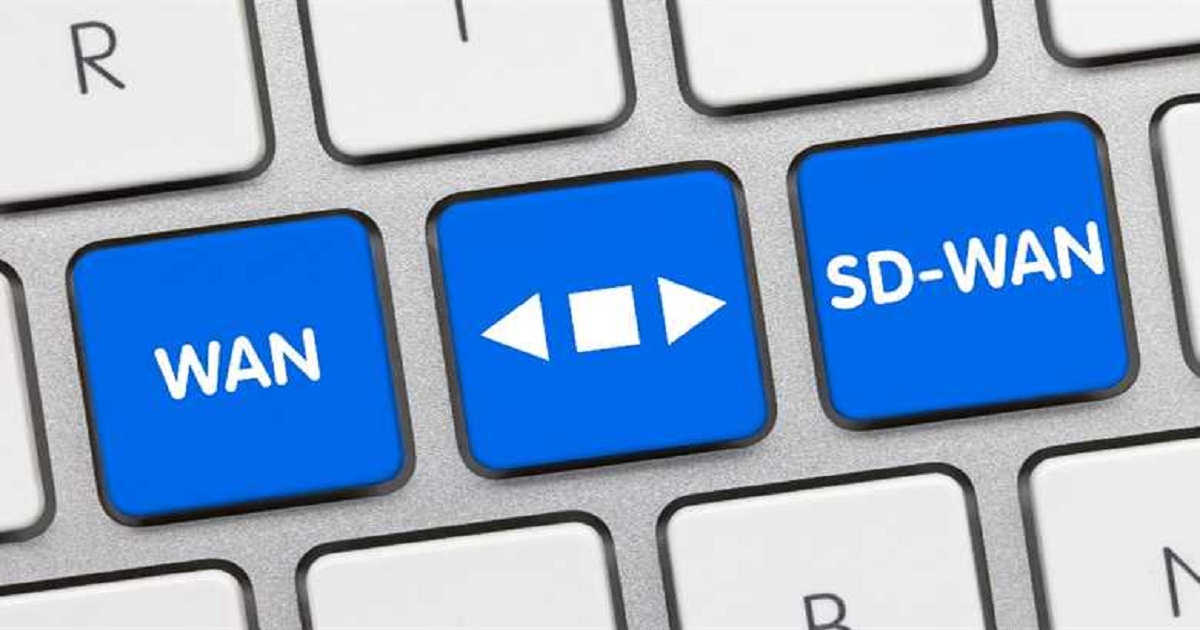
Network Infrastructure, Network Management
Article | July 27, 2023
Before the COVID-19 crisis, the biggest news in tech was the ongoing -- and controversial -- rollout of the 5G network. First, there was the ban on Chinese companies, prohibiting them from being involved with 5G infrastructure in the U.S., U.K. and Australia. Then articles started pointing out that the threat profile for 5G was an order of magnitude higher than that of existing telecom protocols. The coronavirus outbreak, though, has forced some analysts to reassess the value of 5G. While security concerns remain, the network has been invaluable in the fight against the pandemic.
Read More

Wireless, 5G
Article | May 18, 2023
GlobalConnect and Versa Networks entered into a SD-WAN partnership last year. Under the terms of the collaboration, Versa’s Secure Cloud IP architecture, which is a next-generation software platform that delivers integrated cloud, networking and security services, accelerated the productivity of GlobalConnect’s 18,000sqm of data centre space and more than 42,000km of optical fibre network. “With the Versa Networks partnership, GlobalConnect aims to efficiently and securely manage more features with a higher level of flexibility,” said Sebastian Vad Lorentzen, head of SD-WAN engineering at GlobalConnect.
Read More

Enterprise Mobility, Mobile Infrastructure
Article | June 16, 2023
With the emergence of new technologies, the networking field is transforming rapidly. The epicenter of networking has shifted to clouds from datacenters. Similarly, the focus of networking has also moved towards mobile devices. In the upcoming years, tech trends will hugely impact the way a business operates and bring the rise of Industry 4.0.
Top Networking Tech Trends
1. 5G and WI-FI 6
Undoubtedly, the deployment of next-generation wireless networking will be around the corner. In the arena of mobile devices, 5G is set to rewrite the new technological possibilities. It will uncover the true power of augmented reality and IoT.
On the other hand, the next journey of the WI-FI Standard - WI-FI 6 or 802.11ax will become the step for a non-stop innovative world. It will add density, flexibility, scalability, and efficiency for increasing the internet speed of multiple connected devices. That will in return improve the working capabilities of businesses.
2. SD-WAN
As the name suggested, SD-WAN is the software-defined approach for managing WANs. It can lower operating costs while amplifying the usage of resources in multiple deployments. It increases the security level for applications and enables admin to use bandwidth efficiently. It will become the standard format for wide area networks and will help in connecting public cloud resources and branch offices.
3. Secure Access Service Edge (SASE)
SASE is a new networking technology that converges functions of different security and network solutions into one global cloud service. It is an architectural alteration of networking and security that supports IT to offer prompt, holistic, and versatile service to the digital business. It amplifies the security postures, improves access performance, and diminishes operational complexity. It helps organizations to develop new products faster and respond to business needs or changes.
4. IoT/Edge Networking
In comparison to traditional cloud computing, edge computing is the idea to bring data and computers much closer to the end-users. It reduces the need for long-distance communication among client and server, and lessen the cost of bandwidth. It will remain to achieve drift in companies while they decentralize their networks.
5. Automation in Networking
Network automation is the process that automates security and network to maximize the functionality and efficiency of the network. It will help IT companies to deploy applications faster. It is set to take the digital transformation to the next step by automation of network and security operations. It reduces the risk of downtime and failure of the network while making the management faster, simpler, and easier.
Connecting to Future Networking
Based on the trends that will reshape the networking world, we are going to see a significant change in the tech landscape. 2021 will be transformative for every person around the world. Several long-held concepts and infrastructure will be replaced by new ones making the network a vital asset to the business. Besides, the organizations are ready to take advantage of them in a way that was never imagined before. For any question or concern, have an IT consultation from the experienced.
Read More

Network Security
Article | October 27, 2021
Digital liberation has opened up several avenues for businesses. The current scenario is a bright example of how a remote or hybrid work model seamlessly became a norm, establishing digital workspaces, including laptops and PCs.
But this has also led companies to deal with a lot of challenges in managing their enterprise mobility.
Whether it is the security or Bring Your Own Device (BYOD) to the user experience or migration, Mobile Device Management (MDM) plays a significant role in digital transformation.
PROTECTION VS. PRIVACY: THE PROBLEM WITH (MDM) – INTRODUCTION
Mobile device management pertains to software solutions and reliable practices that enable companies to easily manage and obtain wide-ranging mobile devices in compliance with corporate guidelines.
In addition, the MDM functionality addresses the security of devices and data, management of devices, and configurations.
Essentially, MDM as security is an element of an enterprise mobility management solution that integrates a clustered set of tools to secure and manage mobile apps, BYOD devices, content data and access, configurations, risk management, software updates, and application management.
MDM allows a single-interface control over all connecting devices, enabling each device registered for corporate use through the MDM software to be easily monitored, managed, and controlled as per organizational policies.
“It’s clear that our network is better protected. We have solved our BYOD issues and can rely on great support via e-mail, phone, or Skype.”
- Raymond Bernaert, IT Administrator at ROC Kop van Noord, the Netherlands
However, when it comes to an understanding, this technology is of utmost importance to consider the key challenges that companies face regarding protection vs. privacy of mobile device management.
Key Challenges
MDM solutions are built to improve visibility and secure better control into an end user’s mobile device activity. However, unrestrained tracking of the device’s activities poses a huge threat to the end user’s privacy.
For instance, the mobile device management solution may track real-time location and browsing detail. The information exposes employees’ data and usage habits beyond the employer’s device management and security needs.
Moreover, as the mobile device market expands, employees choose devices from various brands and platforms, which companies extend support and manage; nevertheless, unanticipated security issues with a specific platform and software version could emerge at any point. Thus, executing the entire process without compromising the end-user convenience.
Now, let’s check out some of the most common mobile device management challenges.
Security
Using numerous devices and endpoints could potentially increase the risk of hacking. This is because, for hackers, it would be a lot easier to exploit the endpoints.
And, no wonder mobile device security is one of the fastest-growing concepts in the cybersecurity landscape today.
Incorporating mobile devices under the umbrella of mobile device management would be helpful to bridge the vulnerable gaps and prove to firmly manage the entire digital fleet, including mobile phones and PCs. In addition, this will increase up-time significantly and containerize the personal data from corporate data.
The Privacy Issue
Though MDM solution helps organizations obviate data breaches, they also open up doubt and questions regarding employee privacy. This is because various MDM tools allow employers to monitor the entire device’s activities, including personal phone calls and web activity, at any point.
Subsequently, this empowers the IT team to command control in corporate security, whereby they perform many such remote actions, which harm the employees’ privacy.
Organizations over the years have used mobile device management solutions with the intent to put BYOD in place. When an enterprise enables BYOD, employees use their devices to access data to help achieve the tasks.
With the intent to secure the endpoints, companies choose MDM as their key solution and take control over the entire mobile device, but with that comes the potential for abuse. So, naturally, there is an unwillingness among employees to get MDM installed on their devices.
Network Access Control (NAC)
The sudden surge in digital workspace culture has also brought in additional complications with varied mobile devices.
It is crucial to ensure the team has access to all the apps and corporate data they need. However, it is also important to note that there should be a check on direct access to the data center.
One of the core elements for enterprise mobility is network access control (NAC). NAC scrutinizes devices wanting to access your network and it carefully enables and disables native device capabilities distinctly.
With designated devices getting connected to the network as per resource, role, and location, it is relatively easy for NAC to ascertain their access level based upon the pre-configured concepts.
User Experience
It is essential to consider the end-user experience while managing mobility as it often becomes a big challenge. Therefore, a successful mobile device management structure lies mainly in creating a satisfying user experience.
A company that uses various devices and has extensive BYOD users may find VMware Workspace ONE or MobileIron effective.
However, if the enterprise is all Apple iPhones, the ideal enterprise mobility management would be Jamf Pro, an Apple-only EMM.
A single sign would be a perfect method to get into the virtual desktop to ensure efficiency for the remote workers. Moreover, it won’t ask you to sign into different applications separately.
Sturdy enterprise mobile device management is an absolute necessity to have a hassle-free experience.
Let’s cite the example of this case study, where ‘The Department of Homeland Security (DHS) Science and Technology Directorate’ (S&T) initiated the Next Generation First Responder (NGFR) Apex program to assist tomorrow’s first responder in becoming protected, connected and aware.
DHS S&T held a series of NGFR Integration Demonstrations to incrementally test and assess interoperable technologies presently at the development stage.
These demonstrations have changed from tabletop integration to field exercises with partner public safety agencies incorporating increasingly complex technology.
The NGFR- Harris County OpEx included 23 varied DHS and industry-provided technologies involving six Internet of Things (IoT) sensors, five situational awareness applications and platforms and live-stream video feeds.
Additionally, Opex technologies also integrated body-worn cameras and real-time data aggregation and access across numerous agencies.
In a nutshell, this case study identifies and explains the mobile device management (MDM) solutions that provided an application-level cybersecurity evaluation and remote device management. The Opex addresses how nationwide public safety agencies could utilize MDM to enhance the operational deployment of new devices and applications.
Final Words
There are surely both pros and cons involved in mobile device management.
Over the years, the BYOD program has turned out to become a norm in corporate culture. In addition, the use of personal devices has significantly surged due to the gradual increase in remote and hybrid work models. Thus, many believe that the MDM solution is naturally aligned with BYOD.
However, the fact is, a perfectly planned BYOD policy is the only way to ensure clarity. Having no policy in place will expose a firm to the so-called ‘Shadow IT’ as users will circumvent the IT infrastructure working from their mobile devices.
Though the breach of privacy is likely, the policy can be tailored based on the company’s needs. The IT security is adequately maintained and protected and strikes a balance between protections vs. privacy in mobile device management.
Frequently Asked Questions
What can mobile device management do?
Mobile device management keeps business data safe and protected and secures control over confidential information. MDM also exercises its power to lock and remove all data. This is the capability that sustains the device’s security.
What are different mobile management tools?
With the introduction of Bring Your Own Device (BYOD), several enterprise mobility management tools have also been inducted into MDM.
To name a few, some of the prominent MDM tools are Miradore, Citrix Endpoint Management, and SOTI Mobicontrol.
{
"@context": "https://schema.org",
"@type": "FAQPage",
"mainEntity": [{
"@type": "Question",
"name": "What can mobile device management do?",
"acceptedAnswer": {
"@type": "Answer",
"text": "Mobile device management keeps business data safe and protected and secures control over confidential information. MDM also exercises its power to lock and remove all data. This is the capability that sustains the device’s security."
}
},{
"@type": "Question",
"name": "What are different mobile management tools?",
"acceptedAnswer": {
"@type": "Answer",
"text": "With the introduction of Bring Your Own Device (BYOD), several enterprise mobility management tools have also been inducted into MDM.
To name a few, some of the prominent MDM tools are Miradore, Citrix Endpoint Management, and SOTI Mobicontrol."
}
}]
}
Read More